Recent satellite imagery paints a stark and harrowing picture of the decimation of entire communities within Gaza, a result of nearly three weeks of relentless Israeli bombardment. These images, generously provided by Maxar Technologies and Planet Labs, reveal a landscape marred by desolation, with apartment buildings crumbled and neighborhoods reduced to rubble.
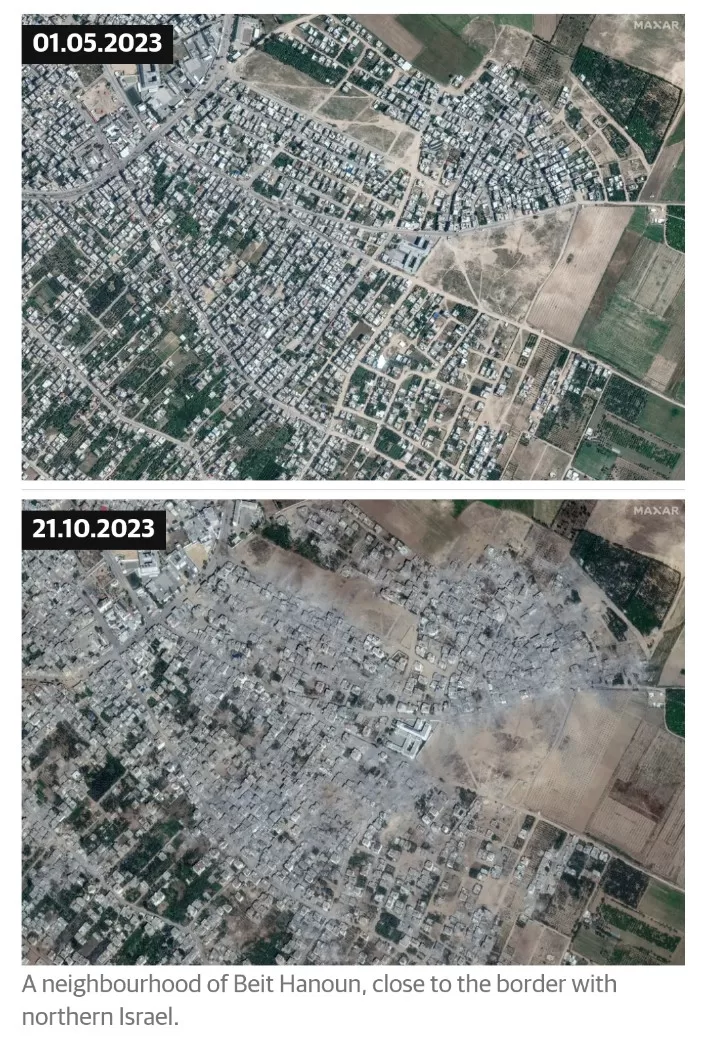
The backdrop to this devastation is the Israeli-Hamas conflict, where Israel has fervently pledged to dismantle Hamas, the governing authority in Gaza. The violence began with the October 7th attacks, which claimed the lives of 1,400 individuals and saw over 200 held hostage.
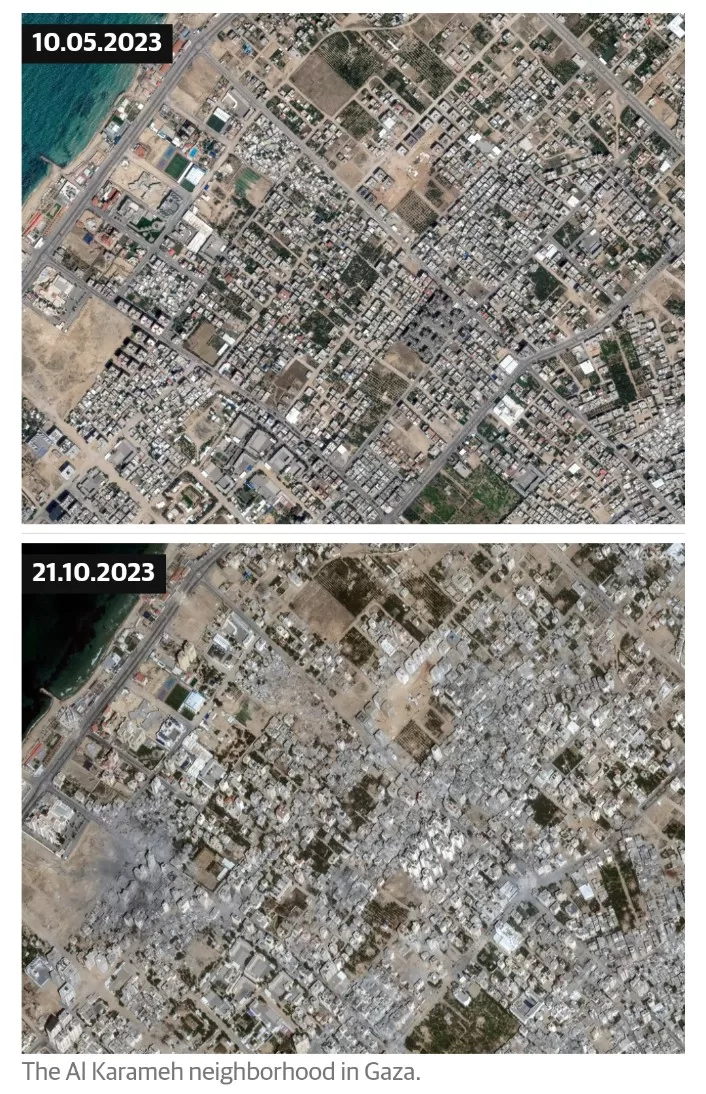
Since those initial strikes, Israel has consistently rained down aerial assaults on Gaza, enforced a crippling blockade, and is poised for a potential ground invasion. Tragically, the collateral damage in the form of civilian casualties has been devastating, with the Hamas-run health ministry reporting over 7,000 lives lost due to Israeli bombardment.
In the city of Beit Hanoun, positioned near Gaza’s northern border with Israel, structures spanning four to five stories exhibit varying degrees of collapse. Some bear significant portions torn asunder, others lay fractured, and a couple of substantial complexes have been reduced to heaps of debris. Early in the conflict, the Israeli air force proclaimed it had targeted Beit Hanoun no fewer than 120 times, citing the area’s association with Hamas activities. The imagery showcases the grim aftermath of these extensive bombardments, where once-vibrant neighborhoods have been reduced to bleak, gray wastelands.
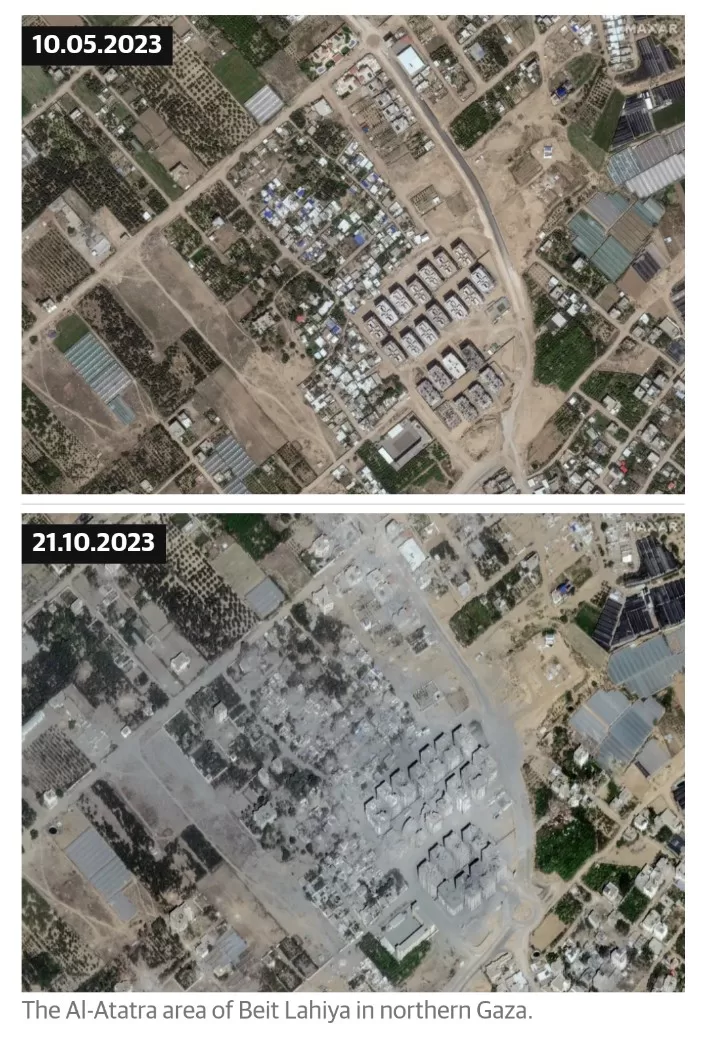
As the relentless airstrikes persist, the full extent of the devastation remains an ongoing tragedy. Satellite images from the Al Karameh neighborhood north of Gaza City portray a somber tableau of residential buildings reduced to rubble.
The United Nations grimly reports that approximately 42% of housing units have become uninhabitable in just three weeks, while thousands more have suffered moderate damage. This unremitting destruction has swelled the ranks of displaced individuals in Gaza, with estimates from the UN and Palestinian Red Crescent indicating that anywhere between 400,000 and one million Palestinians now find themselves homeless.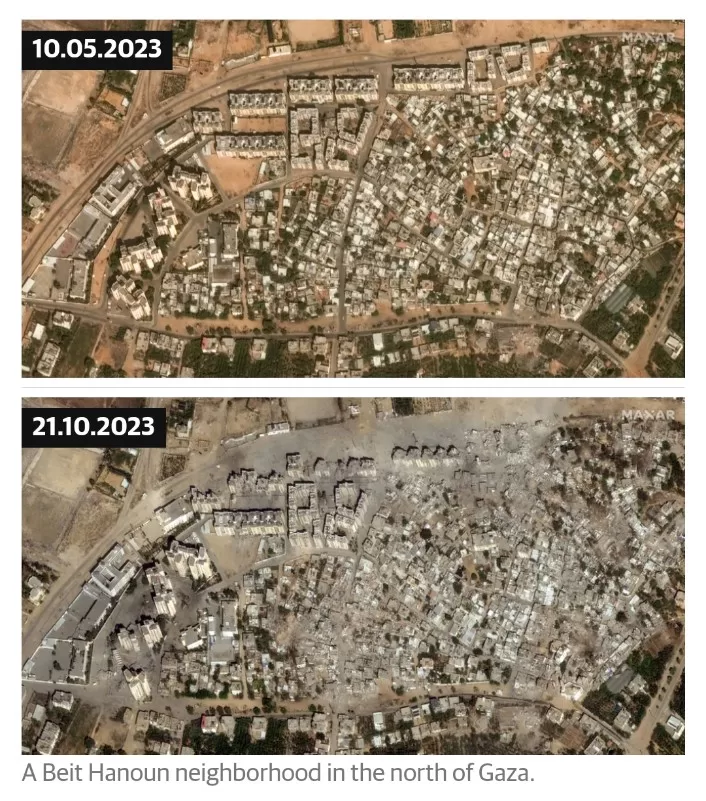
In the Al-Atatra area of Beit Lahiya in northern Gaza, satellite images document the widespread fallout from airstrikes, as ash and rubble have engulfed entire neighborhoods. Alarmingly, the UN sounds an urgent warning regarding dwindling fuel supplies, a threat to the essential operations of its agencies within Gaza.
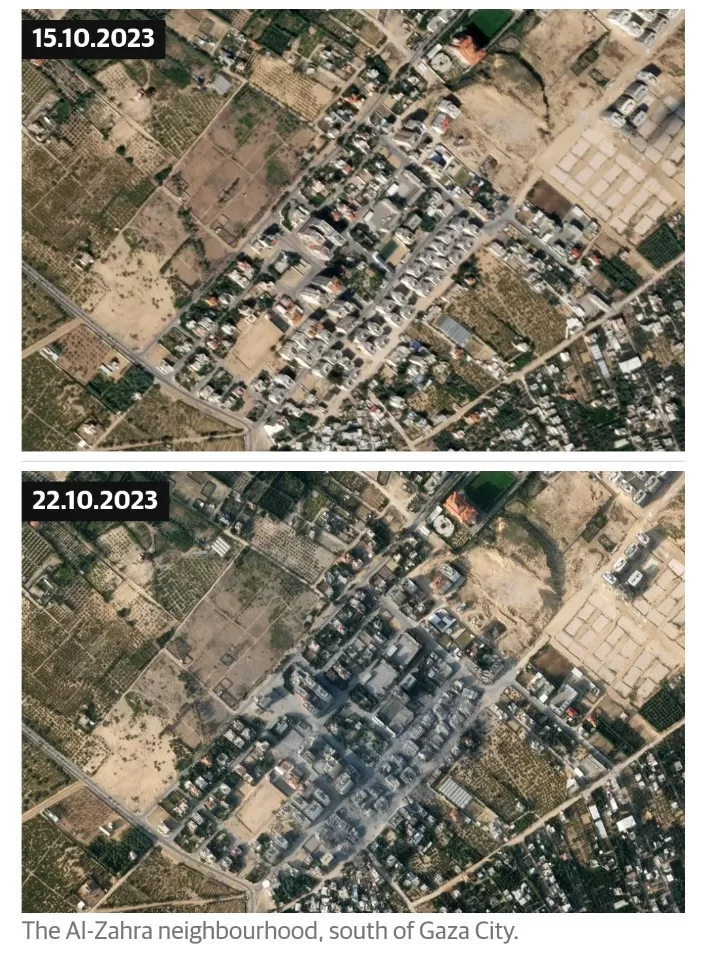
To the south of Gaza City, along the Mediterranean coast, lies Al-Zahra. Recently, Agence France-Presse reported the leveling of over 20 structures in the area due to Israeli missiles. A bewildered resident, grappling with the aftermath, expressed uncertainty about where to seek refuge and how to protect his family in the wake of such devastating strikes. “Even in my worst nightmares, I never thought this could be possible,” lamented Rami Abu Wazna to AFP.






